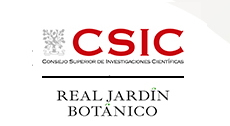Scientific Area
The Brassicaceae then and now -Advancements in the past two decades
ID: 613 / 329
Category: Abstract
Track: Pending
Proposed Symposium Title: The Brassicaceae then and now -Advancements in the past two decades
Authors:
Ihsan A. Al-Shehbaz
Affiliations: Plant Science Department, Missouri Botanical Garden, St. Louis, USA
Abstract:
The Brassicaceae then and now - Advancement in the past two decades
It is generally agreed that the systematic and phylogenetic relationship within the mustard family (Brassicaceae or Cruciferae) is one of the best known among all of the medium- and large-sized families of vascular plants. One of its species, Arabidopsis thaliana, became the model organism of flowering plants about two decades before it entire genome was sequenced in December 2000. The most rewarding developments in systematic botany started when a handful of European and American geneticists, together with their students and others, focused from early to middle 1990’s on the study of variation of a single chloroplast gene (e.g., rbcl), chloroplast restriction-site variation, or nuclear ITS in several species of a given genus or several genera and assessed the phylogenetic implications of their data on systematic relationships and character evolution. Those pioneering studies led in 2006 to the first phylogenetic tribal classification of the Brassicaceae based on the single chloroplast genes ndhF, in which 25 monophyletic tribes were recognized based on a sample of 113 species in 101 genera. That study, together with a global phylogeny of the family based on the internal transcribed spacer (ITS), were the foundation on which based are subsequent studies in the following 17 years that led to the most robust and best available classification of the family using thousands of genes.
As the speaker concludes his 57 years of research on the Brassicaceae, he summarizes the major advancement in the phylogenetics and systematic relationships of the family within the past few decades. Brief comparisons of the limits of tribes, genera, and species between what was then and now are presented. Finally, a handful of features that apparently evolved once in the history of the family as we know it now.




